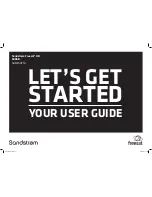
SQE Test
The SQE Test function should be
enabled or disabled depending on the
application. The function must be
disabled for operation when installed
in a Repeater. The function should be
enabled for operation when connected
to a LinkBuilder ECS Local Bridge
Module 3C12050/1.
SQE Test is disabled when the jumper
plug of LINK1 (Figure 1) occupies the
DIS position. The Transceiver Module
is supplied with SQE Test disabled.
Check that LINK1 is in the required
position, and move if necessary.
3
Installation
Only qualified personnel
should install this device.
Observe normal anti-static
precautions! Use an earthed
wrist-band!
A 16-pin header and a 16-way edge
connector are mounted on the
Transceiver Module for connection to a
Module, Stackable Hub or Repeater.
Connection of the Transceiver Module
to a thin Ethernet segment is through
the BNC connector on the front panel
of the Transceiver Module.
Before you install the Transceiver
Module, you must remove the mother
device from the network and all power
sources. Modules must be removed
from the Chassis (you do not need to
power down the chassis first). The
3C18146 Expansion Module must be
separated from its mother module. See
the relevant ‘How to Install and Use...’
manual.
Remove the blanking plate from the
unit in which you are going to install
the Transceiver Module. The relevant
manual will tell you where to find the
plate.
Keep the blanking plate in a safe place
so that it can be replaced if the
Transceiver Module is removed in
future.
Installing on a Stackable Hub or
Repeater
For FMS Stackables and Repeaters, hold
the mounting panel with the pin header
side of the board down.
For FMS II Stackables, hold the
mounting panel with the pin header
side of the board up.
Insert the edge connector end of the
Transceiver Module into the rear of the
mother device.
Slide the Transceiver Module in
carefully to engage in the slot and
push it fully home.
Fix the mounting panel of the Transceiver
Module to the back panel using the two
screws from the blanking plate.
Installing on an ECS or MSH Module
Position the Module on a flat surface
with the 16-way socket facing up. Hold
the Transceiver Module by the
mounting panel and board edge with
the header pins facing down. Pass the
board of the Transceiver Module
through the cut-out in the front panel.
Align the socket on the card with the
pins on the Transceiver Module and
push down firmly to connect.
With the 3C18146 Expansion Module,
you align the header and pins and
press gently to engage the pins. Turn
the pair over to rest on the Transceiver
Module and press firmly close to the
header to complete connection.
Fix the mounting panel of the Transceiver
Module to the module using the two
screws from the blanking plate.
Connection
Before proceeding with the installation
of the module, check that the host
equipment is set up to take the
module. See the relevant ‘How to Install
and Use...’ manual.
Re-install the mother device into its
chassis and/or network.
Connect the Transceiver Module to the
thin Ethernet segment using the
chosen method. If you change your
mind about the method of termination,
you may reset the switch to the
appropriate position without
removing power from the Transceiver
Module.
4
Operation
The Transceiver Module will operate
correctly once power is applied to its
host equipment.
5
Problems
If, after installing the Transceiver
Module, no communication is possible,
check the settings of the host unit and
that it is receiving power. Also, check
the positions of the switch and link on
the module. Ensure correct
terminations are present. If no error is
found, refer to the supplier of your
3Com Coaxial Transceiver Module for
further advice.
Disclaimer
Information in this document is subject to
change without notice and does not represent a
commitment on the part of 3Com. 3Com
reserves the right to revise or change this
document without obligation of 3Com to notify
any person of the revisions or changes.
Information contained in this document is
believed to be accurate at the time of
publication but no liability whatsoever can be
accepted by 3Com arising out of any use of this
information.
3Com
and LinkBuilder are registered
trademarks of the 3Com Corporation.
Document No: DUA1206-6AAA05
Revision : 00
Issued: June 94
© 1994 3Com Technologies Limited
Radio Frequency Interference Statement
This equipment has been tested with a class A
computing device and has been found to
comply with part 15 of FCC Rules. Operation in
a residential area may cause unacceptable
interference to radio and TV receptions
requiring the operator to take whatever steps
are necessary to correct the interference.
This digital apparatus does not exceed the Class
A limits for radio noise emissions from digital
apparatus as set out in the interference-causing
equipment standard entitled "Digital
Apparatus", ICES-003 of the Department of
Communications.
Cet appareil numérique respecte les limites de
bruits radioélectriques applicables aux appareils
numériques de Classe A prescrites dans la
norme sur le matériel brouilleur : "Appareils
Numériques", NMB-003 édictée par le ministre
des Communications.
Standards
The 3Com Coaxial Transceiver Module
3C12066 has been designed to comply with the
following standards:
Functional:
PLS & AUI Specification ISO
8802.3 Sect. 7 & 10
Safety:
UL 478, EN 60950, CSA 22.2
R.F.I.
FCC 20780 (Class A)
EN55022 (Level A)
!
Page 3
Page 2




















